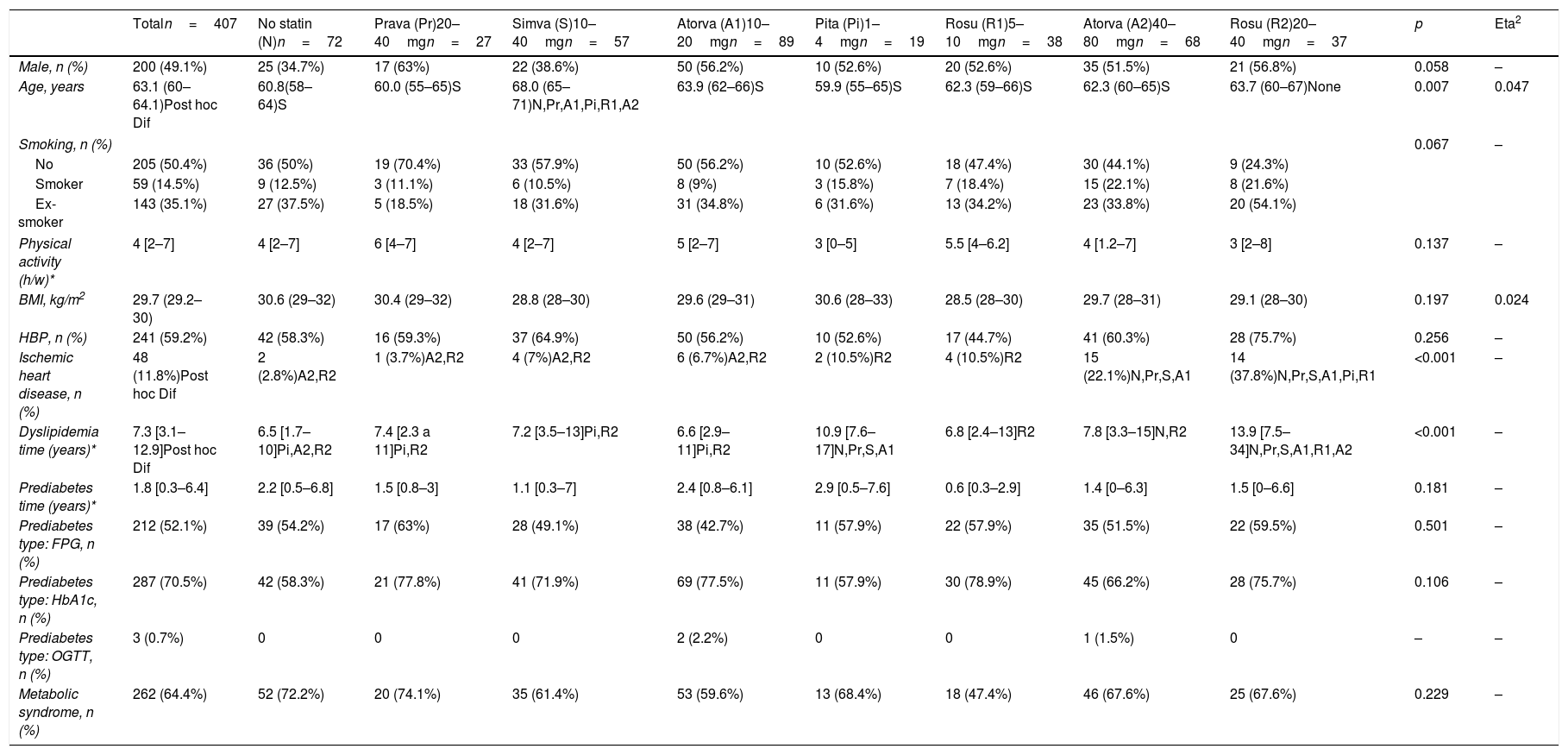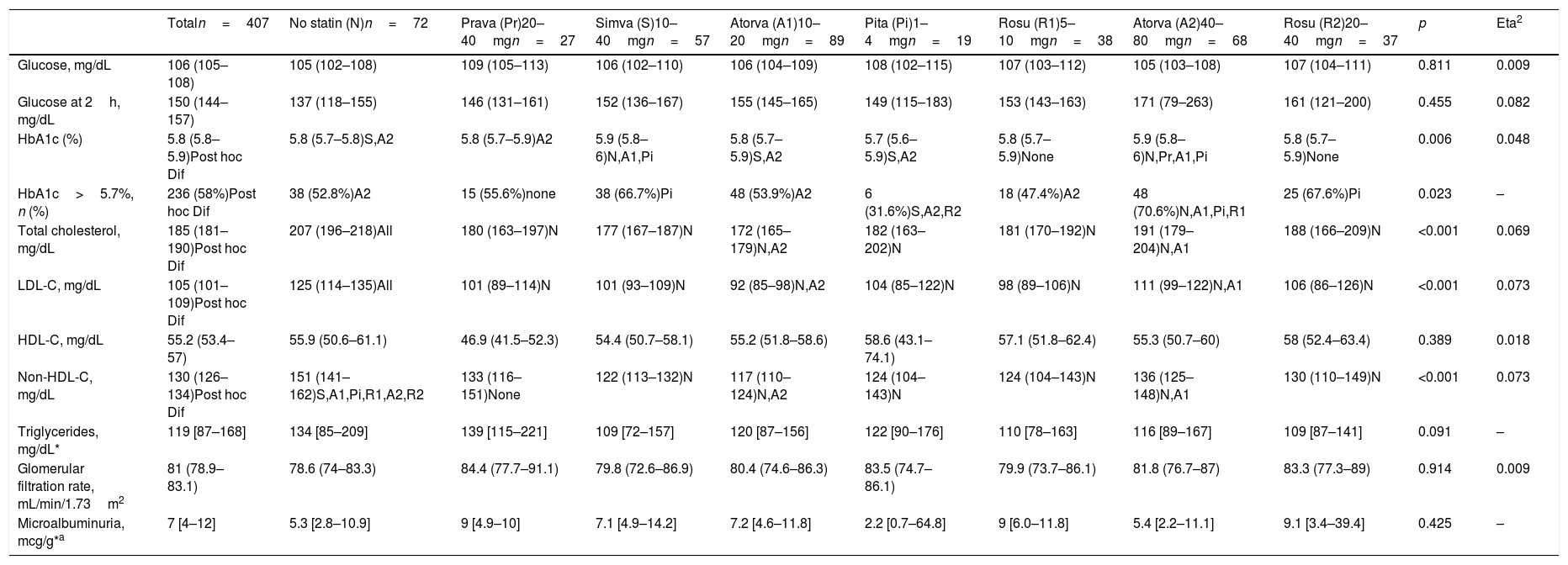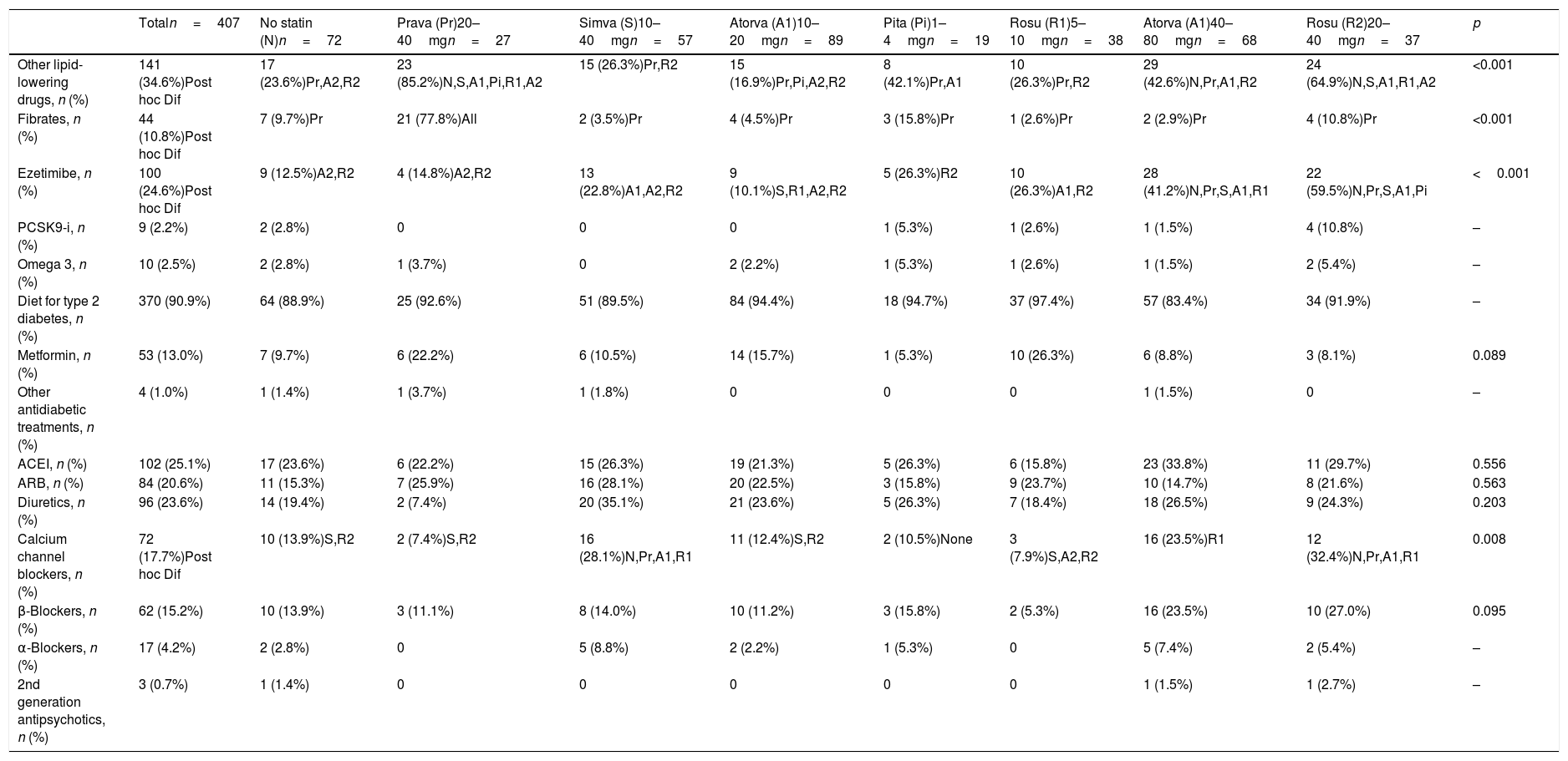Statins are used with the understanding that a slightly increased risk of diabetes is outweighed by their cardiovascular benefits. However, it may be necessary to reconsider whether statin therapy really increase this risk mainly in the population with prediabetes.
MethodsA multicenter, cross-sectional, observational study was conducted to assess the relationship between statin therapy and glucose metabolism in 407 patients aged 63.1 years (11SD) diagnosed with dyslipidemia and prediabetes treated in specialized lipid clinics in Spain.
ResultsSignificant differences were found in HbA1c values among treatment groups (p=0.015). Patients treated with pitavastatin (1–4mg/day) showed the lowest HbA1c levels, with significant differences compared to patients treated with atorvastatin 40–80mg/day (p=0.016) and simvastatin 10–40mg/day (p=0.036). By contrast, patients treated with atorvastatin 40–80mg/day showed the highest HbA1c levels compared to those receiving atorvastatin 10–20mg/day (p=0.003), pitavastatin 1–4mg/day (p=0.016), pravastatin 20–40mg/day (p=0.027), rosuvastatin 5–10mg/day (p=0.043), and no statin treatment (p=0.004). Patients treated with simvastatin 10–40mg/day also had higher values than those treated with atorvastatin 10–20mg/day (p=0.016) and pitavastatin 1–4mg/day (p=0.036) or with no statin treatment (p=0.018).
ConclusionsThis study suggests that there are differences in the diabetogenic effect of statins. Simvastatin and high doses of atorvastatin may be associated with greater impairment in glucose metabolism than pitavastatin and other statins with less lipid-lowering potency such as pravastatin.
Las estatinas son utilizadas de acuerdo con el entendimiento de que el pequeño riesgo de incremento de diabetes se ve compensado por sus beneficios cardiovasculares. Sin embargo, puede resultar necesario reconsiderar si la terapia con estatinas incrementa realmente el riesgo, principalmente en la población con prediabetes.
MétodosSe realizó un estudio multicéntrico, transversal y observacional para evaluar la relación entre la terapia con estatinas y el metabolismo de la glucosa en 407 pacientes de 63,1 años (11 DE) diagnosticados de dislipidemia y prediabetes tratados en clínicas especializadas en lípidos en España.
ResultadosSe encontraron diferencias significativas en los valores de HbA1c entre los grupos de tratamiento (p=0,015). Los pacientes tratados con pitavastatina (1-4mg/día) reflejaron los menores niveles de HbA1c, con diferencias significativas en comparación con los pacientes tratados con atorvastatina 40-80mg/día (p=0,016) y simvastatina 10-40mg/día (p=0,036). Por contra, los pacientes tratados con atorvastatina 40-80mg/día reflejaron los mayores niveles de HbA1c en comparación con los pacientes que recibieron atorvastatina 10-20mg/día (p=0,003), pitavastatina 1-4mg/día (p=0,016), pravastatina 20-40mg/día (p=0,027), rosuvastatina 5-10mg/día (p=0,043) y los que no recibieron estatinas (p=0,004). Los pacientes tratados con simvastatina 10-40mg/día tuvieron también valores más elevados que aquellos pacientes tratados con atorvastatina 10-20mg/día (p=0,016) y pitavastatina 1-4mg/día (p=0,036) que no recibieron estatinas (p=0,018).
ConclusionesEl presente estudio sugiere que existen diferencias en cuanto al efecto diabetógeno de las estatinas. Simvastatina y las altas dosis de atorvastatina pueden guardar relación con un mayor deterioro del metabolismo de la glucosa que pitavastatina y demás estatinas con menor potencia de reducción de lípidos, tales como pravastatina.











